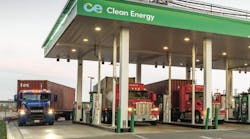Sales of new trucks across the globe are projected to stay below recent peak levels for several years to come, according to a recent Standard & Poor's analysis. That's no surprise to truckers in the U.S., given the steep rise in sticker prices due to new emissions rules along with a freight market that is still down in the dumps.
The research firm reports that demand around the world for new trucks over the next few years could remain far below the peak levels achieved in Europe in 2008 and for North America back in 2006.
“In our view, this will leave the industry in a position of persistent rather than temporary overcapacity, in spite of truck makers' ongoing cost cuts that are likely to improve financial results from the very weak levels of 2009,” Standard & Poor's said in its recent market analysis.
“In the current environment of low factory utilization, we see a risk that pricing will become increasingly competitive and that producers will be more vulnerable to raw material cost inflation than was the case in previous downturns,” the firm added.
Demand appears healthier in developing markets such as Brazil, China, and India, although demand in Russia has been very weak of late, Standard & Poor's reported. “But of those markets, only Brazil and neighboring South American countries have meaningfully contributed profits for the major global truck makers,” it said.
None of this analysis, however, surprises long-time observers of the trucking market. “The U.S. economy will grow much more slowly over the long term, so there will be no ‘ramp up’ in freight demand any time soon — and having such a ‘ramp up’ in freight is what will push equipment sales,” Eric Starks, president of research firm FTR Associates, told Fleet Owner.
A similar situation regarding stagnant new truck sales occurred following the 1982 recession, he added. “We experienced a decent rebound [in truck sales] when we came out of the '82 recession but then it fizzled out,” said Starks. “As a result, it took 15 years before we returned to a sales peak.”


